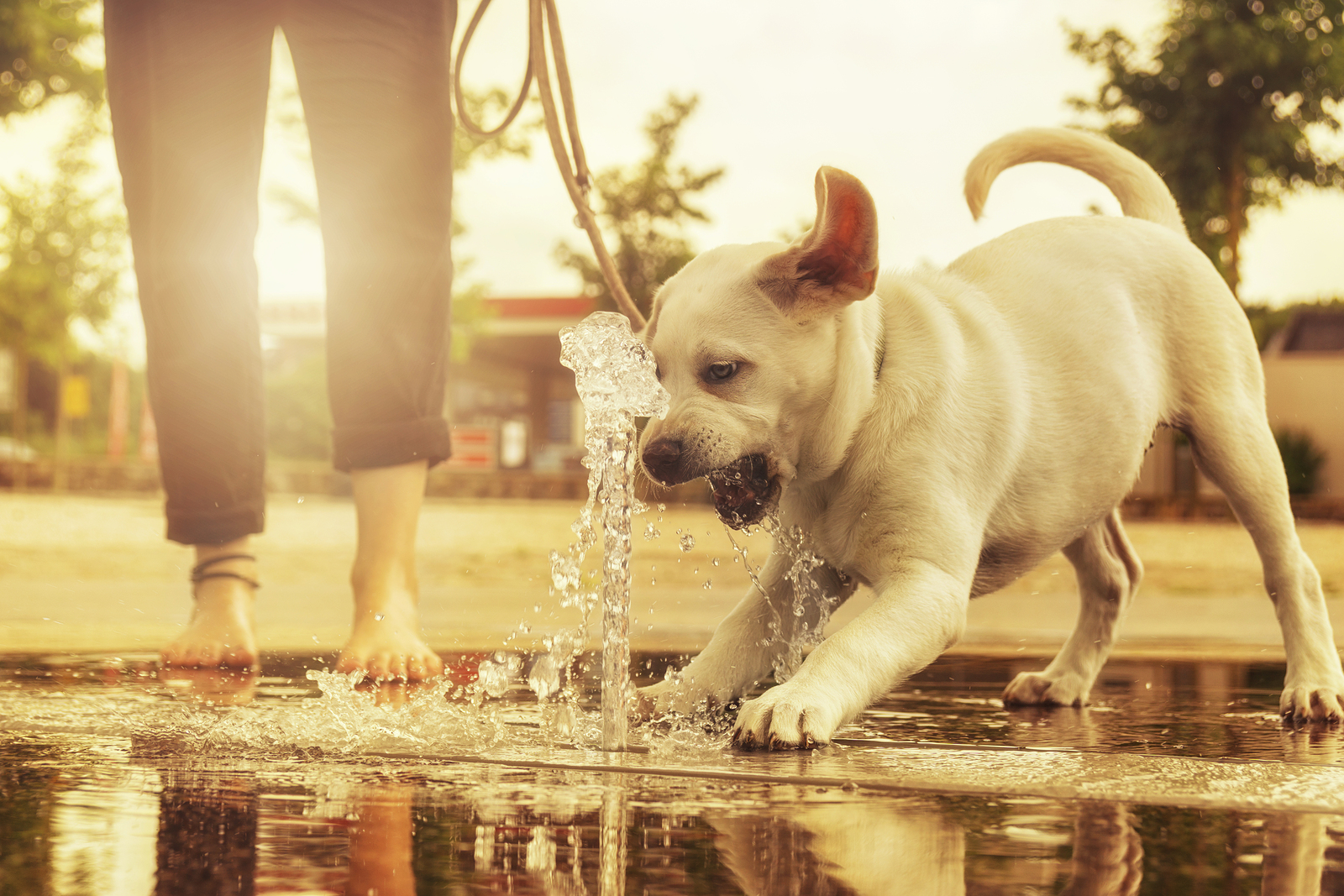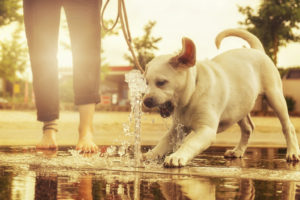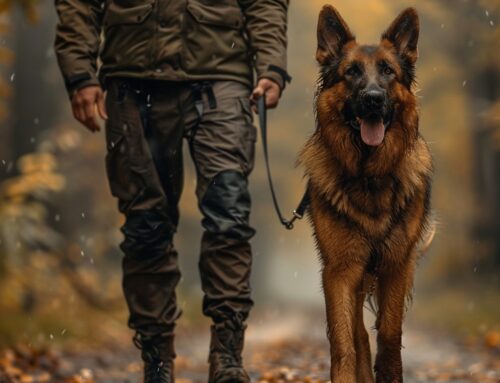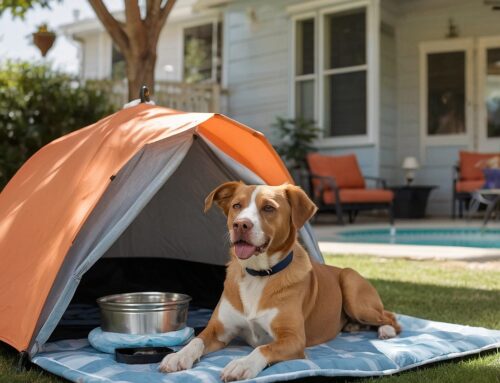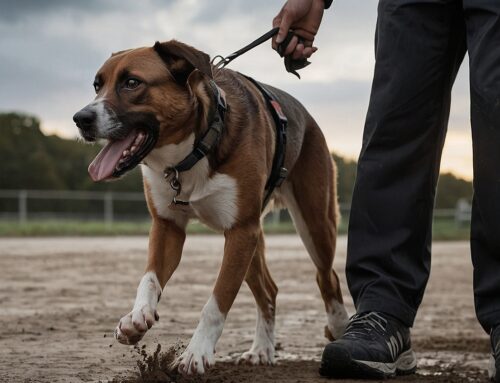Goodbye, July. Hello, August. Hot days are still on the way. While many of us are getting used to the warmer temperatures, pet owners need to stay diligent in keeping their pets safe. What people can tolerate in the heat may not the same for dogs who can be susceptible to a heatstroke.
Overheating safety precautions for dogs
For pet owners who like to take their dogs out for a walk, do it during the coolest parts of the day like morning or an hour or so before the sun goes down. Make sure not to over-exercise pets and avoid the hottest part of the day which is 11 am to 3 pm. Also, watch for cues such as a dog trailing behind or wanting to sit down during the walk.
Here are other steps to take:
• Always have plenty of fresh, clean water if pets are outdoors
• If pets are outdoors, be sure they have a place which offers them plenty of shade
• Consider installing misters in dog runs or other dog areas
• NEVER leave a dog (or any animal) in a parked car even with the windows cracked open for a couple of minutes because they will overheat.
• Do not let dogs walk on hot asphalt which can burn their pads
Dog breeds susceptible to overheating
Brachycephalic breeds (dogs with flat faces) have a shorter muzzle and are more vulnerable to overheating. A dog’s mechanism to cool down is panting, and these breeds are unable to pant like dogs with longer muzzles.
Brachycephalic breeds include:
• Pugs
• Boxers
• Boston Terriers
• Bulldog
• Bullmastiff
• Affenpinscher
• Cavalier King Charles Spaniel
And more.
If there is a heat advisory, take extra precautions with pets. Keep them indoors in the coolest part of the home and/or near a fan.
Even with all the precautions pet owners can take, do look out for the overheating symptoms in pets which may include drooling, extreme panting, breathing challenges, lethargy, difficulty walking, or not wanting to get up. In more severe cases vomiting, seizures or diarrhea may be present. If one of these symptoms are present, or if a pet owner suspects their animal is ill, see the veterinarian immediately.



